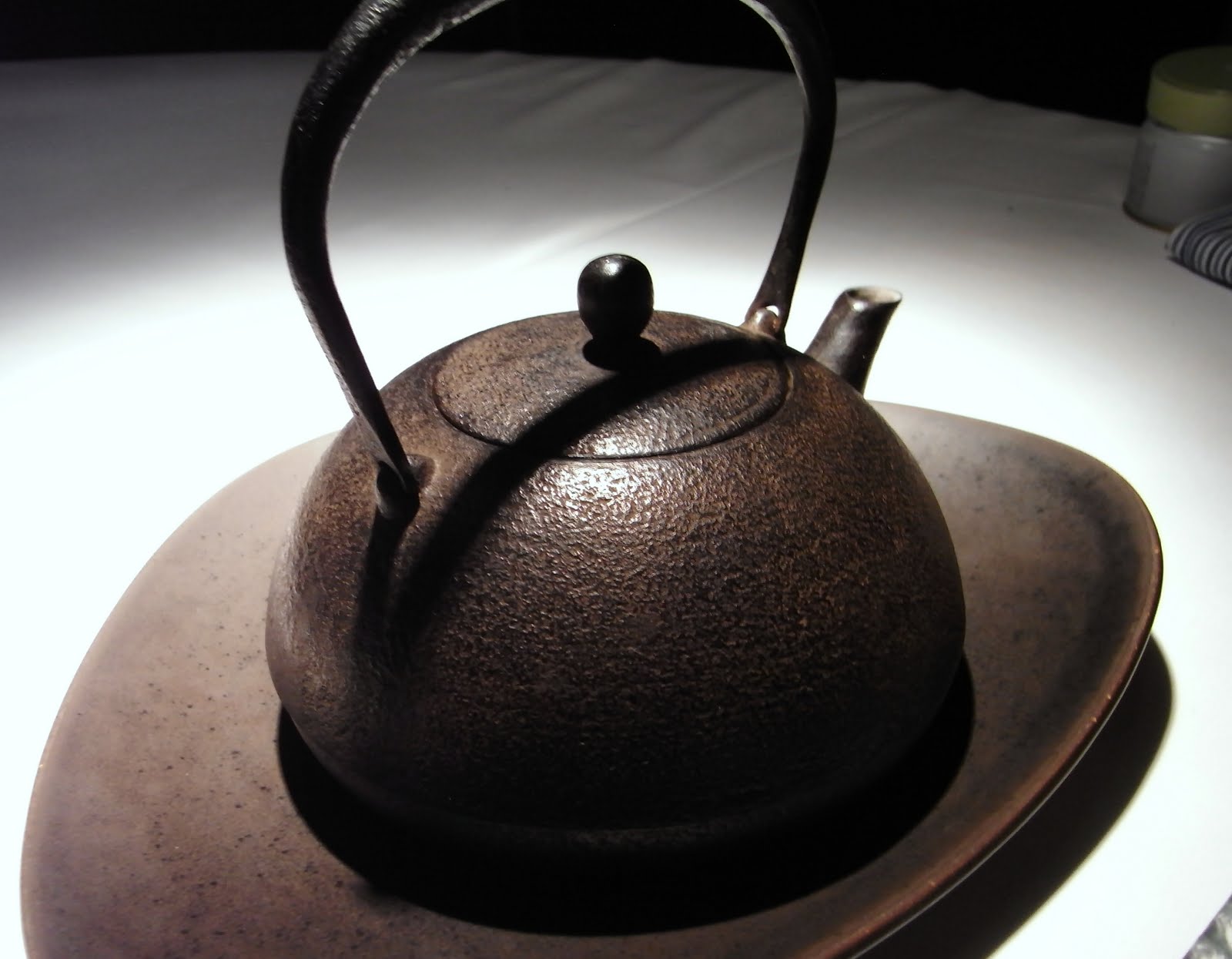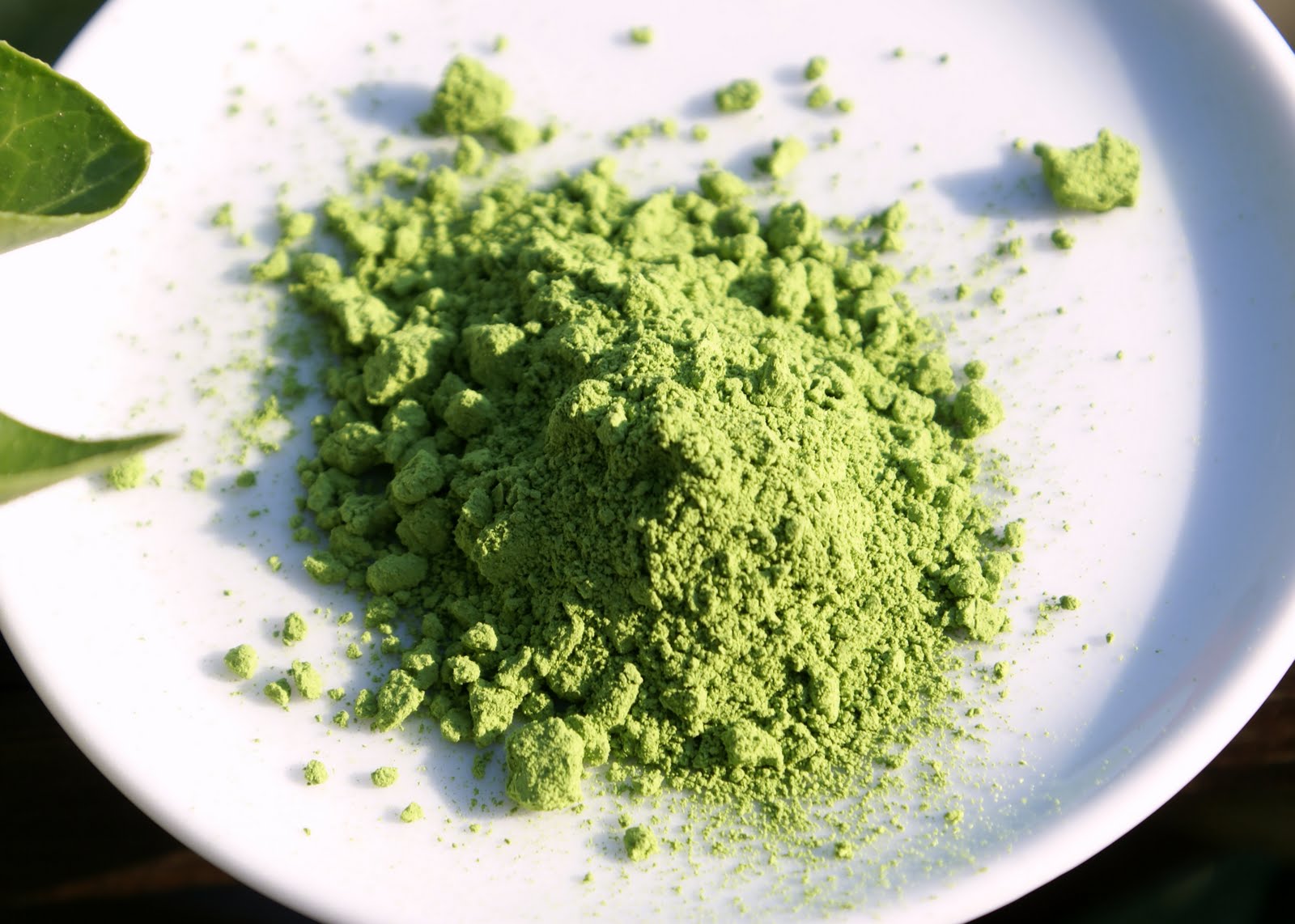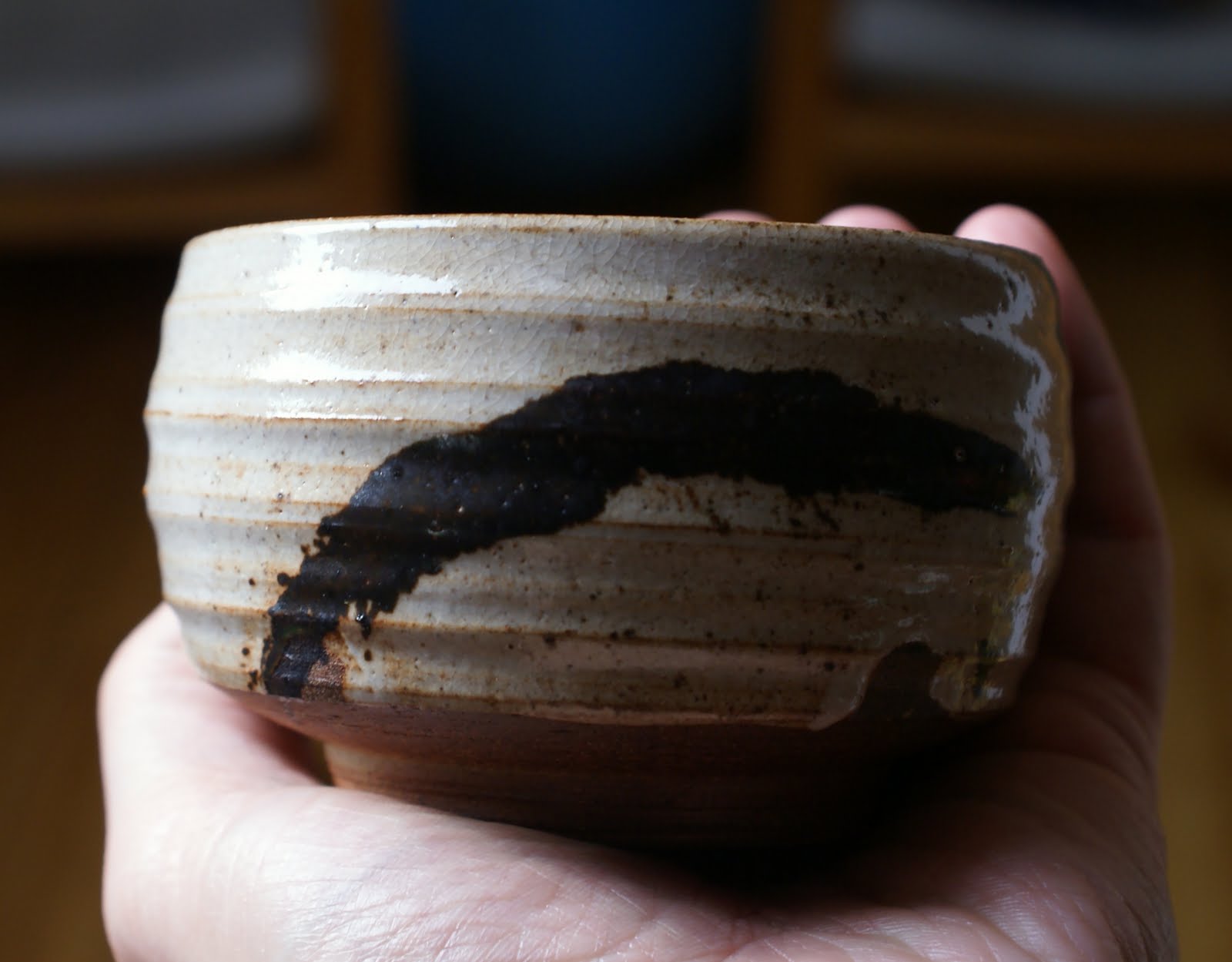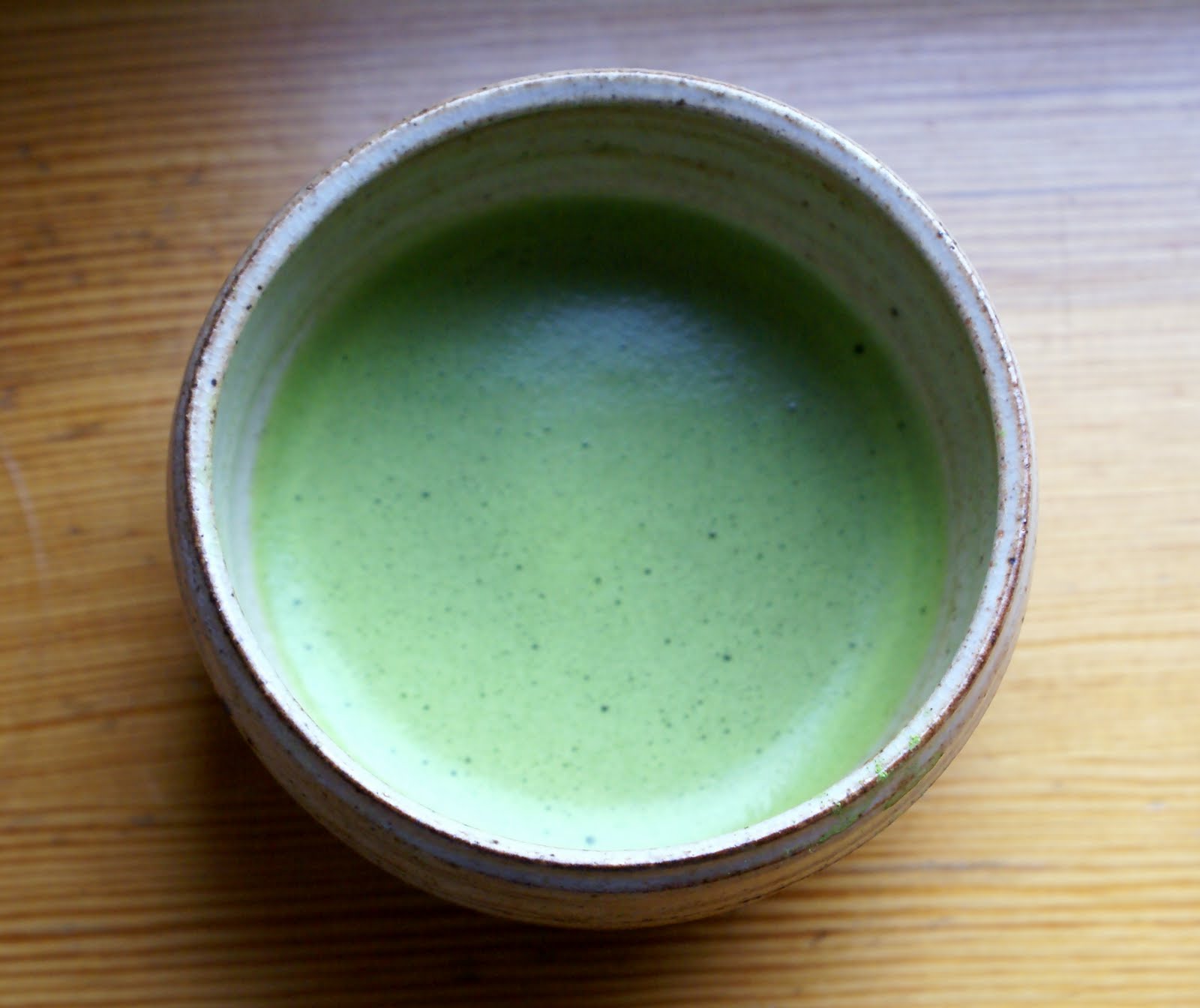My first chanoyu
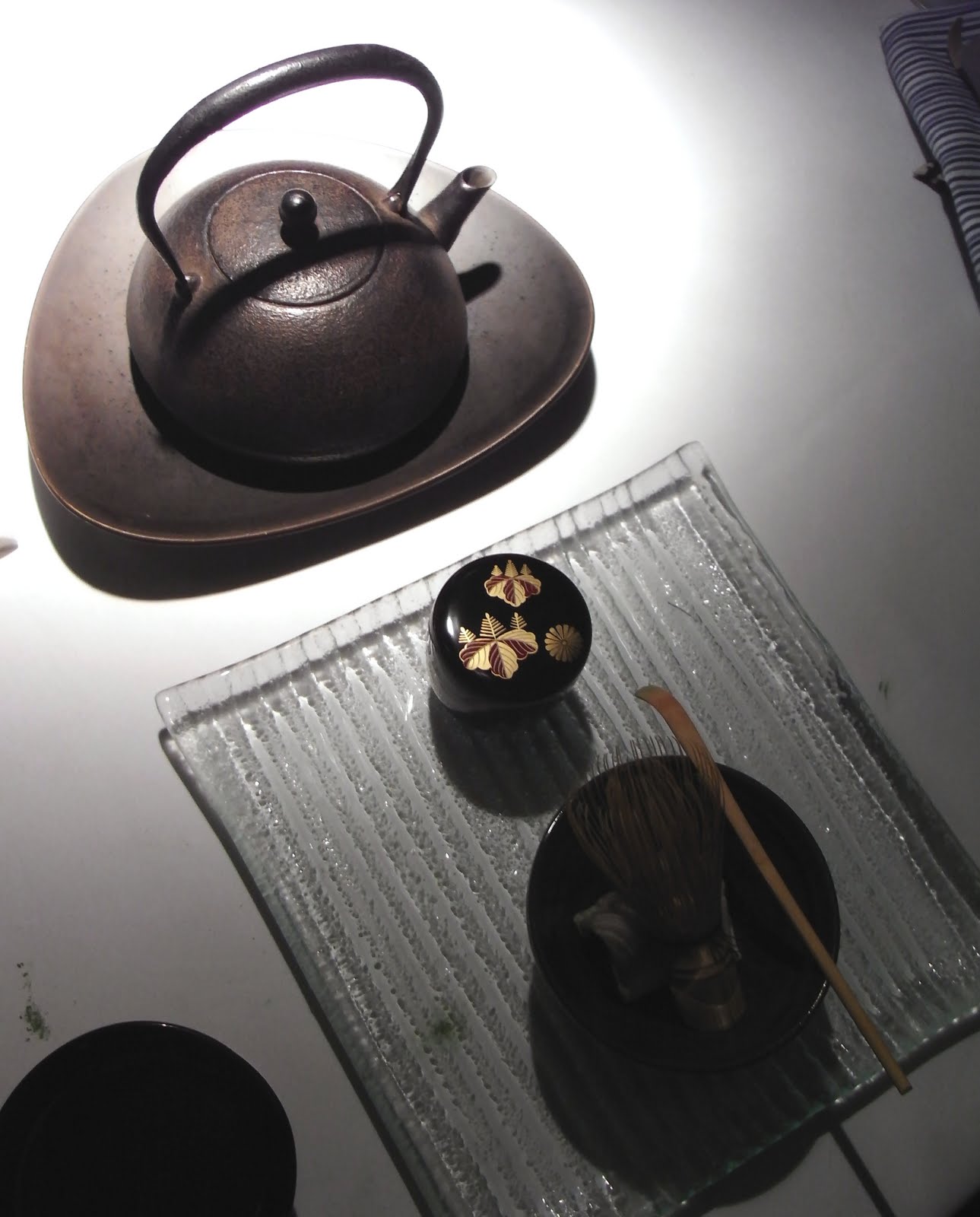 |
| Our modest chanoyu setup. |
The visit of Tsuyoshi Ishikawa, a fellow tea lover from Japan, to Warsaw has triggered an impromptu Japanese tea ceremony – in fact my first of the kind. While I’ve blogged before on matcha – the ceremonial grade of powdered green tea from Japan – I’ve always been drinking it in the home context, without the aesthetic and philosophical ornament that surrounds a proper chanoyu. Here was an occasion to set my mind differently.
It worked, it really worked. Between the two of us we gathered all the necessary tea equipment from the bamboo whisk and matcha sifter to the precious chawan bowl and the indispensable cast iron tetsubin. The latter was a recent acquisition of mine – a small handy 1-liter piece of outstanding craftsmanship from Kunzan (sourced from Hojo; see photo above). It really has a colossal influence on the taste of the water and the texture of the tea. Through Tsuyoshi’s carefully orchestrated moves we were transported into the timeless domain of tea contemplation, and the distant hassle of the main restaurant room above us seemed to gradually fade away. Drinking matcha is as much about the flavour as it is about the tactile and temporal experience of making and imbibing it.
After Tsuyoshi prepared both koicha (thick tea, which is in fact a paste that you rather eat than drink) and the more relaxed usucha (thin tea), it was my turn to try my hand at the ceremonial preparation. The central act of dosing, whisking and serving went pretty well, I think; now it’s time I practiced those impossible complex origami-like movement you make with the ceremonial napkin.
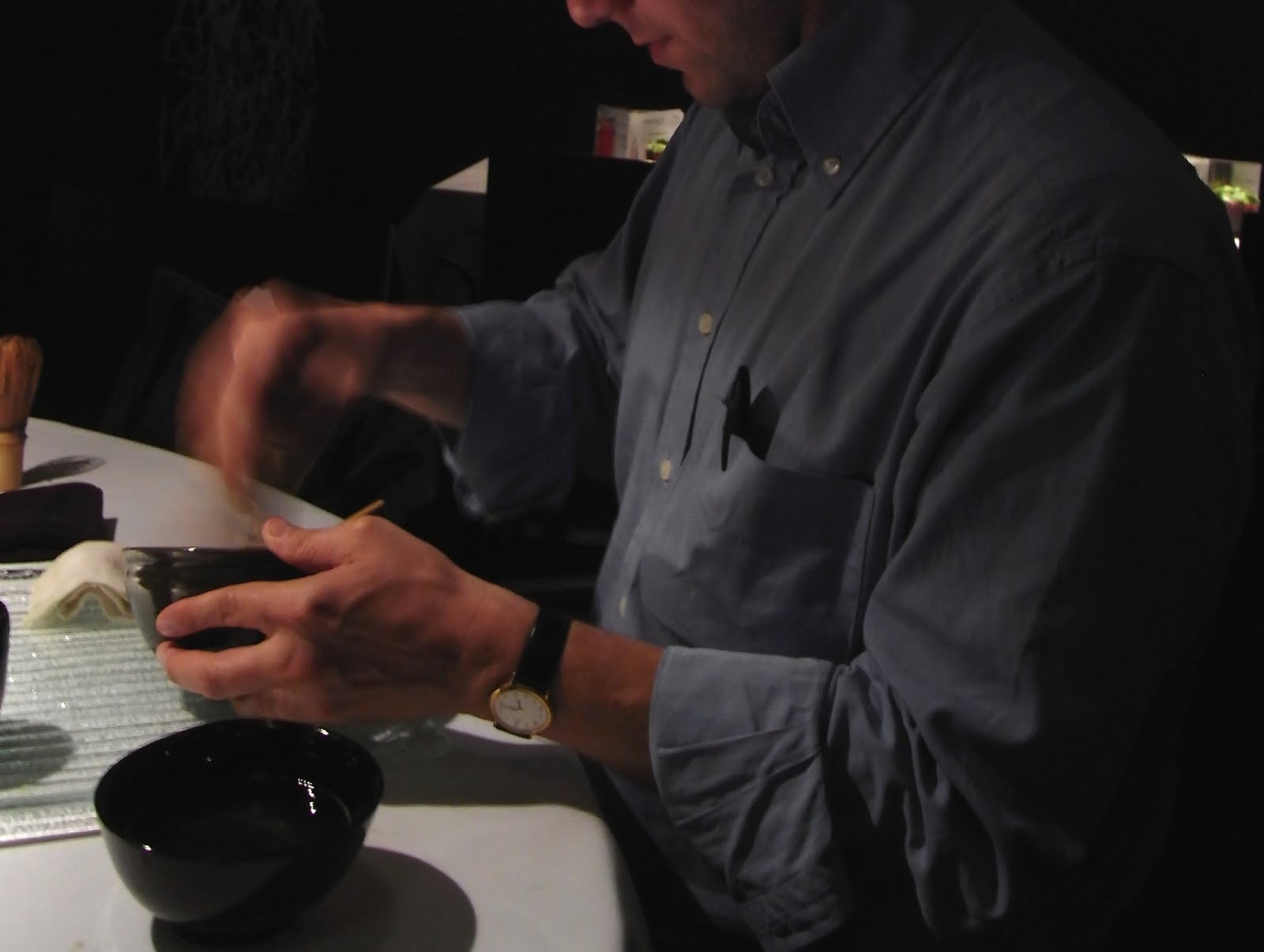 |
| Yours truly whisking duly. |
Tsuyoshi kindly left me the can of matcha to enjoy at home. I have no idea where it comes from (perhaps readers with a grasp of Japanese will recognise it on the pictures below). It’s a solid grade, good enough for making koicha. It is a little less sweet and aerial than the 2008 Kinrin from Marukyu-Koyamaen I reviewed in this post, with a more pronounced vegetal flavour (but not bitter). On several attempts I found it rather hard to whisk to a very fine froth; the best I got still had some random big beer-like bubbles. A good tea in any case.


